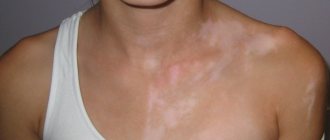A child coughs after running and other physical activity: causes and ways to solve the problem
Each of us has experienced a cough after jogging or playing sports. Usually adults do not attach any importance to this, but when this is observed in a child, parents rush to understand the reasons that cause the child to cough after running and ways to solve the problem.
Why might a child cough after physical activity?
- A common cause of coughing after a run or active games is an insufficient level of physical fitness. If sports are not carried out regularly, then the body works in an unusual, intense mode, and the response to rapid breathing will be a cough.
- Cough may occur due to bronchial hyperactivity. As a result of an increase in heart rate, they narrow and the supply of the required volume of air becomes difficult. It is detected after examinations and tests with bronchodilators.
- In case of chronic foci of inflammation in the organs of the respiratory system, caused by viruses or bacterial infection, after physical activity the child experiences severe attacks of dry cough. This is due to irritation of the affected tissue due to increased blood circulation after exercise.
- Previous colds contribute to the appearance of shortness of breath and other ailments. That is why doctors’ recommendations regarding the timing of limiting physical activities should not be neglected.
- Children with bronchial asthma should not run long distances because they may experience coughing and shortness of breath. In this case, intensive walking would be the ideal option.
Symptoms that should alert parents
If a child begins to cough after any type of activity for no apparent reason, this may be a sign of the development of bronchial asthma. The disease is difficult to detect at the initial stage, so it is necessary to stop all physical activity until an accurate diagnosis is made. Parents should also consult a pediatrician in the following cases:
- cough persists for a long time after the end of physical activity;
- cough begins to appear less than 5 minutes after the start of running;
- The pulse is more than 160 beats per minute, and the child begins to cough.
If you have symptoms such as sputum with purulent contents, blueness of the limbs and face, shortness of breath or shortness of breath, you should immediately consult a doctor. The best solution is to call an ambulance.
If a child’s cough during and after physical activity seems “unhealthy” to parents, it is imperative to seek help from a specialist.
How to get rid of the problem?
Having determined the cause of a child’s cough and eliminating the manifestations of dangerous diseases, you can begin to create favorable conditions for training or active games. Activities that will help your child not to cough after activity:
- It is necessary to strengthen the body to increase endurance. This process should be accompanied by a gradual increase in load so that the child does not become overtired.
- Conduct classes in the fresh air, away from roads or industrial enterprises, so that harmful substances do not enter the respiratory tract and cause soreness. The ability to correctly inhale through the nose and exhale through the mouth also plays an important role.
- If children often engage in active games indoors, you need to take care of timely ventilation and humidification of the air. Avoid tobacco smoke near children.
- When choosing clothes, give preference to comfortable ones that do not restrict movement, made from natural materials, so as not to cause overheating. If a small person is sweating, this is a sign of increased stress on the organs.
- After suffering from a cold, following a gentle regimen plays an important role so that the body has time to fully recover.
Child coughs while running
The causes of severe coughing after running in children are usually the same as in adults: poor physical development, improper breathing technique, pathologies or a recent illness.
If coughing occurs once, there is no reason to worry. However, if the phenomenon becomes periodic, this is a serious reason to worry about the baby’s health and go to the hospital for advice. Prolonged attacks may indicate asthma or heart problems. Asthma is accompanied by other symptoms:
- pain in the chest area,
- decreased vitality, mood swings,
- teary eyes,
- skin rashes.
A child's body is more susceptible to an unfavorable environment. Therefore, you should protect your child from activity in smoky or unventilated rooms. It wouldn’t hurt to avoid jogging in the cold. If a cough manifests itself during exercise in the gym, it may be a symptom of an allergy to the paint and varnish coatings of the room.
In any case, self-medication is extremely undesirable; only a doctor can determine the diagnosis and recommend therapy. It is best to coordinate the possibility of training and jogging with him.
The acute respiratory viral infection is over, but the cough remains. what to do with a cough after a cold
Cough is an inevitable companion to ARVI. It is one of the first to appear, signaling the onset of the disease, and the last to disappear.
Sometimes a cough remains for several weeks even after all other “cold” symptoms have passed.
Do you need to worry if a child continues to cough after ARVI, and how to help him, the author of “Daily Baby” Tatyana Gitun learned from pediatric pulmonologist Yulia Aleksandrovna Ryabtseva.
Habit of coughing
Cough is a natural protective reaction of the body, which during acute respiratory viral infections helps to clear the airways of accumulated mucus, and along with it, remove dust that has penetrated inside and viruses and microbes that have settled on the mucous membrane.
The cough center of the brain is responsible for regulating this reaction, which receives signals from sensitive receptor cells located in the inner lining of the respiratory tract - the oropharynx, larynx, trachea, and bronchi.
As soon as some irritant acts on the cough receptors - drops of sputum, dust particles, volatile substances carried with the air, etc. - receptors are activated and send a signal to the brain. In response to this, a cough occurs.
Yulia Ryabtseva: “Sometimes, due to the fact that during ARVI, the mucous membrane of the respiratory tract is severely damaged by inflammation and damage by viruses, the cough receptors are so irritated that they cannot leave the active state. As a result, even after illness, they continue to react to the weakest influence, and sometimes, for no reason at all, send signals to the brain that cause coughing. This condition is called bronchial hyperresponsiveness.
A cough after an acute respiratory viral infection can persist for quite a long time, from 3 weeks to 1.5 months, especially if the child is constantly exposed to some provoking factors. The fact that this is a residual cough is indicated by its character - the cough is dry or almost dry, the body temperature is not elevated, every day the cough becomes less frequent and weaker, and at night it does not bother.”
"Provocateurs"
As already mentioned, residual cough can occur on its own, without any reason. But most often, coughing attacks occur under the influence of some provoking factors. And among them there are several of the most important ones, which can cause a longer cough.
Preventive measures
To prevent a cough from manifesting itself, you need to follow the following general recommendations:
- during intense training in the gym you need to drink a lot of fluids,
- consume vitamin C - it reduces the symptoms of bronchoconstriction of physical effort,
- run in warm weather in the fresh air in places that are far from industrial zones and highways,
- when jogging down the street, you can breathe through a scarf so that the incoming air is not cold,
- exercise in loose and comfortable clothes. Tight sportswear can cause suffocation,
- avoid activity in gyms where there is a lot of dust,
- to refuse from bad habits.
These tips apply to cases in which pathology and past illnesses have been excluded.
A dry cough may indicate an incurable disease - MK
Doctors urge caution if shortness of breath occurs
— Alexander Vyacheslavovich, please tell us more about this disease? How common is it?
– Idiopathic pulmonary fibrosis is a relatively rare, progressive disease characterized by the formation of scar tissue in the lungs. It replaces healthy tissue, reduces the diffusion of oxygen into the blood, causing patients to feel short of air.
As the disease progresses, shortness of breath increases and severe respiratory failure develops.
It should be noted that most forms of cancer have a significantly better prognosis than idiopathic pulmonary fibrosis, in which 80% of patients die within 5 years of the onset of the disease.
There are no exact data on the prevalence of IPF in Russia. Since last year, our country has maintained a register of this pathology, in which only about 600 patients are currently registered. Their real figure is significantly higher. So in the USA about 100,000 people suffer from this disease, in Europe - 110,000.
Extrapolating these data to our population, we can say that we have at least 20-30 thousand such patients. Such a large difference in indicators is associated with difficulties at the stage of identifying IPF.
Some researchers argue that in many cases, the patient dies before a correct diagnosis is made, which makes the disease considered rarer than it actually is.
– What are the difficulties associated with its diagnosis?
– Difficulties in diagnosing IPF arise for several reasons. Symptoms of IPF are nonspecific. Shortness of breath and a dry cough, the most common symptoms of the disease, are characteristic of many other diseases.
Therefore, more than half of patients with IPF are initially given a completely different diagnosis: pneumonia, COPD, heart failure, pneumosclerosis. It is very important to timely refer the patient for a computed tomography scan of the chest, without which it is impossible to make an accurate diagnosis.
Unfortunately, very often such research is carried out with a significant delay. Incorrect diagnosis gives rise to the problem of ineffective and sometimes harmful therapy for the patient.
Also problematic is the fact that IPF is an understudied disease (the word “idiopathic” reflects the uncertainty about the origin of the disease). Due to the rarity of the disease, internists and pulmonologists often have no experience in managing such patients.
On average, a correct diagnosis takes more than a year. During this period, the progression of the disease leads to the development of irreversible changes in the lungs, disability, and subsequently to death.
– Do all doctors know about IPF?
“Unfortunately, doctors’ awareness of this disease is quite low. Moreover, this applies not only to Russian specialists.
Studies conducted in the West have shown that our foreign colleagues in more than half of the cases cannot make a diagnosis, even with computed tomography data. In general, this situation is typical for any rare diseases.
Therefore, consistent education on this issue is necessary for both primary care physicians and pulmonologists.
– What symptoms should alert you?
— Shortness of breath that occurs even with simple, everyday physical activity and a dry cough may be a reason to visit a doctor. Another fairly common symptom of IPF is enlargement of the nail phalanges of the fingers (the so-called “watch glass” or “drumstick” syndrome).
When a doctor performs auscultation (listening with a stethoscope), characteristic sounds of crepitation are heard, which resemble the crunch of cellophane or the sound of Velcro. This sound phenomenon is characteristic of many other respiratory and cardiovascular diseases, making the diagnosis of IPF particularly difficult.
Therefore, if you have any doubts, it is best to contact a specialized pulmonology center, where experienced doctors will be able to recognize a dangerous disease.
– Who is at risk?
Most often, IPF affects men over 50 years of age, especially those who have ever smoked or continue to smoke, or who have had regular contact with dust. Women can also be patients with IPF, but the disease is diagnosed in them much less frequently. A risk factor is also the presence of gastroesophageal reflux, which is present in 80% of patients with IPF.
– Is this disease curable?
“Unfortunately, at the moment there is no possibility of a complete cure for this disease. But with timely diagnosis and the prescription of innovative antifibrotic drugs, there is a chance to maintain the quality of life at a high level for a long time and slow down the progression of IPF.
– How to change the situation with poor detection of the disease?
The mechanism of the cough reflex
Sometimes after a run, especially over a long distance, a person experiences asthma attacks or coughing. Several factors influence the occurrence of the cough reflex . Coughing is always a reflex reaction of the body, due to which mucus or foreign agents are removed from the respiratory tract. The cough reflex occurs when receptors in the pharynx, trachea, and bronchi are irritated. The cough can be wet (with mucus) or dry.
After a person runs, spasms may occur in his bronchi. After physical activity, the amount of air inhaled increases, blood circulation in the chest area increases, and the heart begins to beat faster. For this reason, previously dormant processes are activated in the human body, and a cough appears.
True, bronchospasm, caused by irritation of receptors in the bronchi, can lead not only to cough, but also to suffocation, which occurs due to a narrowing of the airway.
A cough or shortness of breath that appears after a run can become symptoms of previously undetected diseases. If a person starts coughing after running, he needs to start walking, calm down and only then stop. If such an alarming symptom appears, you should consult a doctor.
Prevention
It is always worth remembering that a cough is a sign of various pathologies, so the cause of its occurrence must be immediately identified and eliminated. In order to prevent the formation of a cough, it is recommended to follow these rules:
- You should not smoke while exercising, as it increases the load on the heart and lungs;
- after recovery from respiratory diseases, it is recommended to refrain from exercise for a month;
- If you have asthma or heart pathologies, it is better to hold off on exercising and consult a doctor.
At the slightest manifestation of cough during physical activity, you should consult a doctor, especially if the symptom is accompanied by additional symptoms.
source










